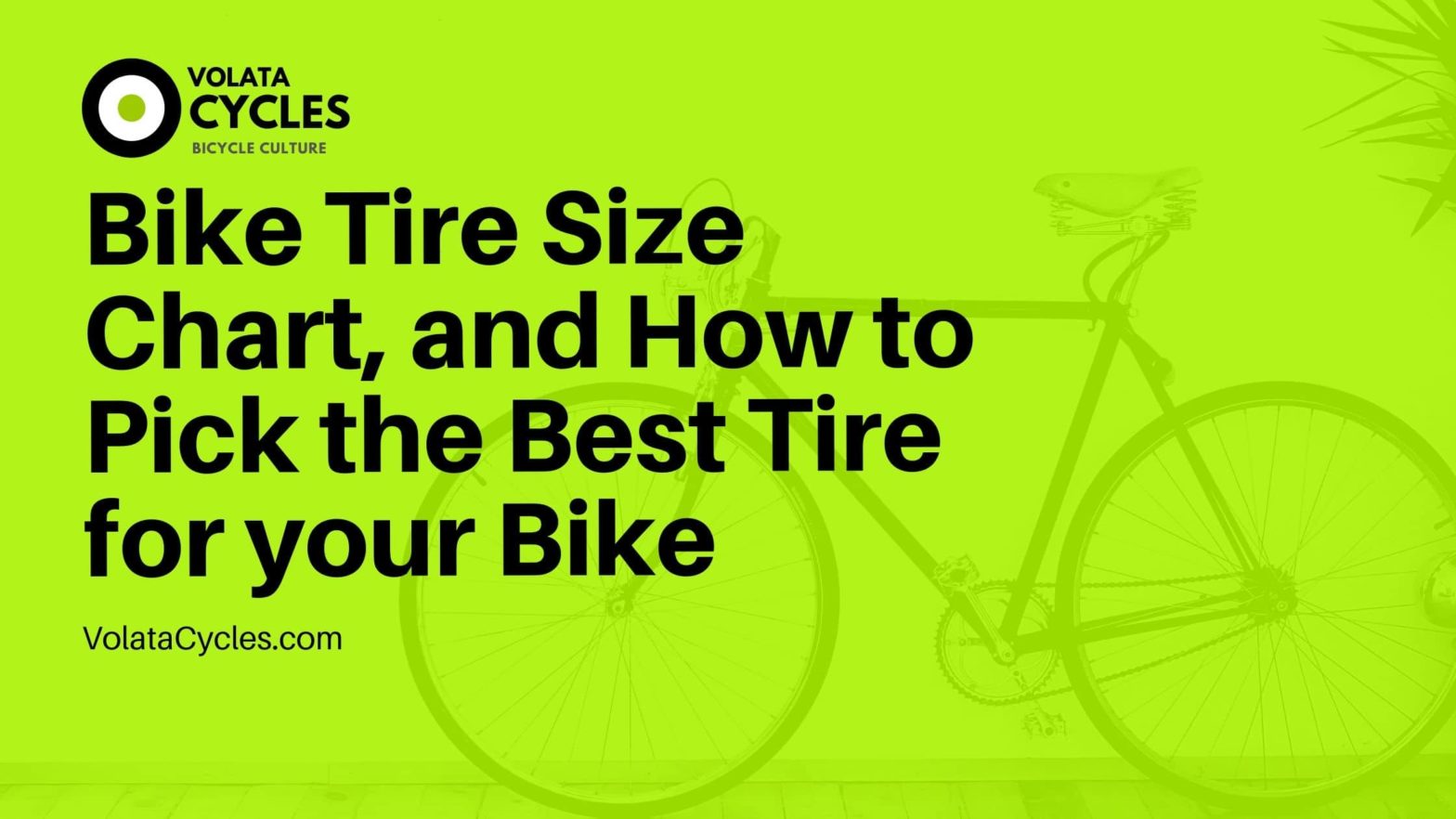Let’s face it, most of us aren’t all that discriminating when it comes to our bike tires. In fact, most of us will simply use the tires our bikes came with until they’re too worn out to use. While the kind of bike we get will largely determine the kind of tires it will be fitted with, it isn’t always the case that a newly purchased bike will come with the right tires. Some manufacturers want to scrimp on material, after all, for the purpose of making more money.
Not just that; you can make your bike perform much better by simply swapping out the tires for better ones. I bet that thought didn’t really occur to you; I bet you simply intended to ride your tires out until they need to be replaced. But, seriously, you don’t have to live with the tires your bike came with—unless they’re already good, of course—because there can be a lot of riding improvement to be had by getting the right set of tires.
In this article, we’ll discuss what the best tires will be for what riding condition so you can tell whether you’ve got a good set of tires or whether you’ll need to swap them out for better ones.
Tire Width
For Race Bikes
Naturally, race bikes will require narrow tires. Narrow tires will be less heavy, after all, which is precisely what one who is racing will want. The typical tire for racing bikes used to be 23mm, but things are changing, and more than a few racing bikes are now fitted with 25mm (some even up to 28mm). These are still pretty narrow, of course, but the extra mm in width will give them more traction and make them safer.
For Endurance Bikes
The common tire width used for endurance bikes is 28mm, which is narrow but a bit wider than what’s commonly found on race bikes. The simple reason for this is that endurance riding needs to balance comfort with speed.
For Adventure Bikes
When it comes to biking over gravel or other similar surfaces, you’d want tires with a much bigger width than the ones above. We’d recommend something in the range of 30-50mm. The bigger width is of course needed to deal with more varied road conditions, which include off-road tracks.
For Touring Bikes
For touring bikes, the main concern is comfort. So you don’t want a tire width that’s too small, like what can be commonly found on race or endurance bikes. We’d suggest somewhere between 25-50mm. Of course, bear in mind that the thicker the width, the more comfortable the ride, but the slower and heavier the bike will be.
Commuter Bike
For commuting bikes, it will really depend on the road one will be contending with. But, generally, anything between 28 to 44mm will be fine and will have a good balance of speed and comfort.
Tread Pattern
Different bikes—or different riding conditions—will require different tire treads, too. And it will always be good to know which tread is best for the specific conditions in which you’ll be riding.
If you’ll be riding over relatively smooth tarmac, then a slick tire tread will work just fine. Some slick treads will have grooves on the side to shed water and improve traction—you’ll want that if you don’t infrequently ride on wet or slippery roads. For mountain bikes, you will naturally want a tire with treads that are specific for mountain bike riding. After all, a mountain bike trail will require more traction and less rolling resistance from a tire than the typical daily commute.
Type of Tires
A clincher is the normal kind of tire that most are used to. The name comes from the fact that they “clinch” to the rim, kind of like how a car’s tire does. They require an inner tube to hold the air and operate.
Tubular tires, on the other hand, operate in a very different way. They may look like clinchers from the outside, but that’s as far as their similarity goes. There is no part of the tire that needs to clinch the rim, and its tubes are literally sewn into the tire, which makes the whole thing a single piece. Because they don’t clinch to the rim, they are often glued to it, so they don’t move around.
In a nutshell, clinchers are less expensive and easier to fix or maintain, but tubulars are more durable and will last longer. In terms of weight, tubulars get the advantage, too.
Tire Material
This is basically what the tire is made from. Are they made of rubber of some kind of organic or inorganic polymer? The material that your tire is made from will have a big effect on the performance of your bike, and it will be a good idea to get a set of tires that are made from the type of material your style of riding will need. It will be best to talk this over with a professional at the bike shop before purchasing a set of tires.
Tire Sizing Chart
Since there’s a huge amount of variation between bike tire sizes, the International Organization for Standardization (ISO) developed a system by which tire and rim sizing can be better regulated and understood.
The chart below, which you can use as a guide to deciding the tire size you need for your bike, will help you understand how tire sizes are typically written, and which sizes are commonly used for which types of bikes.
| ISO(mm) | Conventional Name | Inches | |
| 622 | Modern Road Bike | 700c | 29 |
| 584 | Vintage Randonneur | 650b | 26×1 1/2, 27.5 |
| 559 | High Performance Time Trial | 650c | 26×1, 26×1 3/4 |
| MOUNTAIN BIKE TIRES | |||
| ISO(mm) | Conventional Name | Inches | |
| 622 | 29 inch Mountain Bikes | 700c | 29 |
| 584 | Modern MTBs | 650b | 26×1 1/2, 27.5 |
| 559 | Classic Mountain Bikes | 26×1.0 – 26×2.5 | |
| CRUISER/CITY BIKE TIRES | |||
| ISO(mm) | Conventional Name | Inches | |
| 622 | Hybrid Bikes | 700c | 29 |
| 571 | Older Schwinn Models | 650c | 26×1, 26×1 3/4 |
| 559 | City Bikes | 26×1.0 – 26×2.5 | |
| 507 | Cruisers | 24×1.5 to 24×2.5 | |
| CHILDREN’S BIKE TIRES | |||
| ISO(mm) | Conventional Name | Inches | |
| 547 | British and Schwinn Children’s Bikes | 24×1 1/8, 24×1 3/8 (S-5) | |
| 540 | British Children’s Bikes | 600a | 26×1 1/2, 27.5 |
| 520 | Classic Mountain Bikes | 26×1.0 – 26×2.5 | |
| 507 | Children’s Mountain Bikes | 24×1.5 to 24×2.5 | |
| 451 | Children’s Lightweight Bikes | 20×1 1/8, 20×1 1/4, 20×1 3/8 | |
| 305 | Children’s Bikes | 16×1.75 to 16×2.125 | |
| 203 | Children’s Bikes | 12 1/2 x anything | |
| OTHER BIKE TIRES | |||
| ISO(mm) | Conventional Name | Inches | |
| 451 | Some BMX Bikes | 20×1 1/8, 20×1 1/4, 20×1 3/8 | |
| 406 | Some Recumbent Bikes | 20×1.5 to 20×2.25 | |
| 406 | BMX Bikes | 20×1.5 to 20×2.25 | |
| 369 | Folding bikes by Moulton | 17×1 1/4 | |
| 355 | Folding bikes by Birdy | 26×1, 26×1 3/4 | |
| 349 | Folding bikes by Moulton | 16×1 3/8 | |
| 305 | Some Recumbent Bikes | 16×1.75 to 16×2.125 | |
| NON-BIKE SPECIFIC TIRES | |||
| ISO(mm) | Conventional Name | Inches | |
| 540 | Wheelchairs | 600a | 24×1 1/8, 24×1 3/8 (E5) |
| 305 | Trailers | 650b | 16×1.75 to 16×2.125 |
| 203 | Scooters | 650c | 12 1/2 x anything |


1 comment